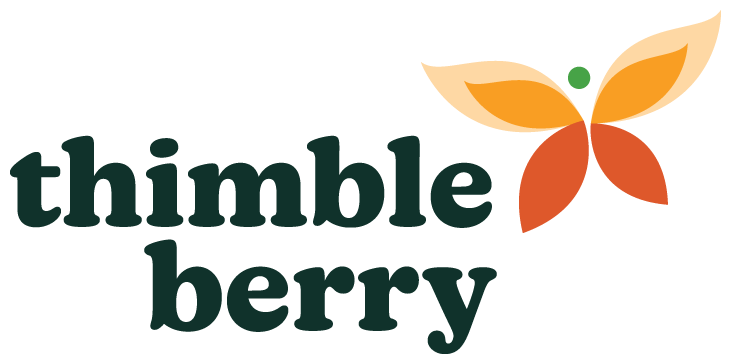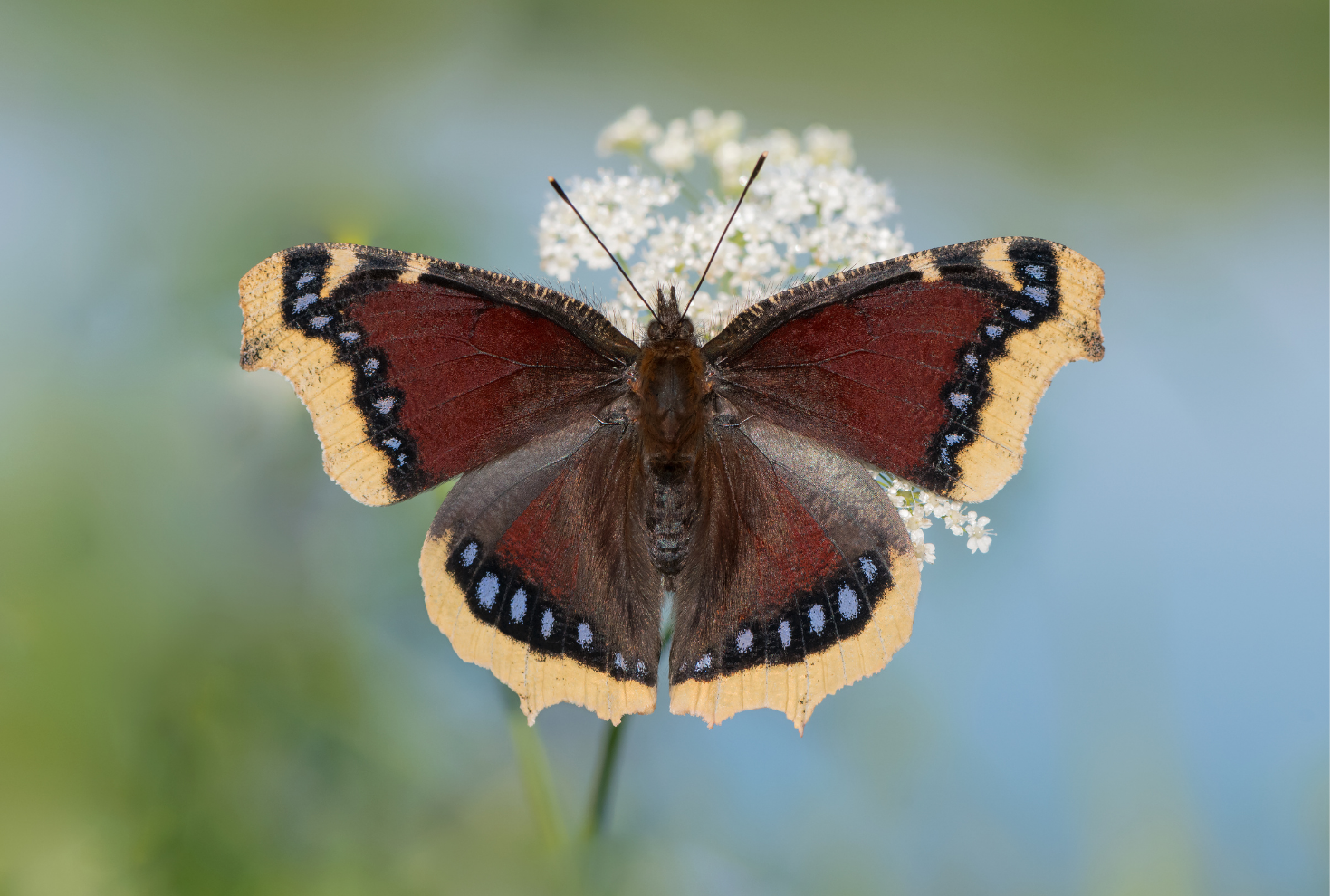
The more time we spend in nature, the more we see our own experience mirrored in the cycles of the natural world. The darkness of night is followed by the light of day: our own difficulties pass, and we feel hopeful once again. The new life of spring expands into summer and recedes during fall and winter: we have times of productivity and times of restful retreat. The caterpillar pupates and becomes a chrysalis before emerging transformed, a beautiful butterfly. We face challenges that try and test us and, as a result, are often strengthened by them.
The Butterfly Cycle
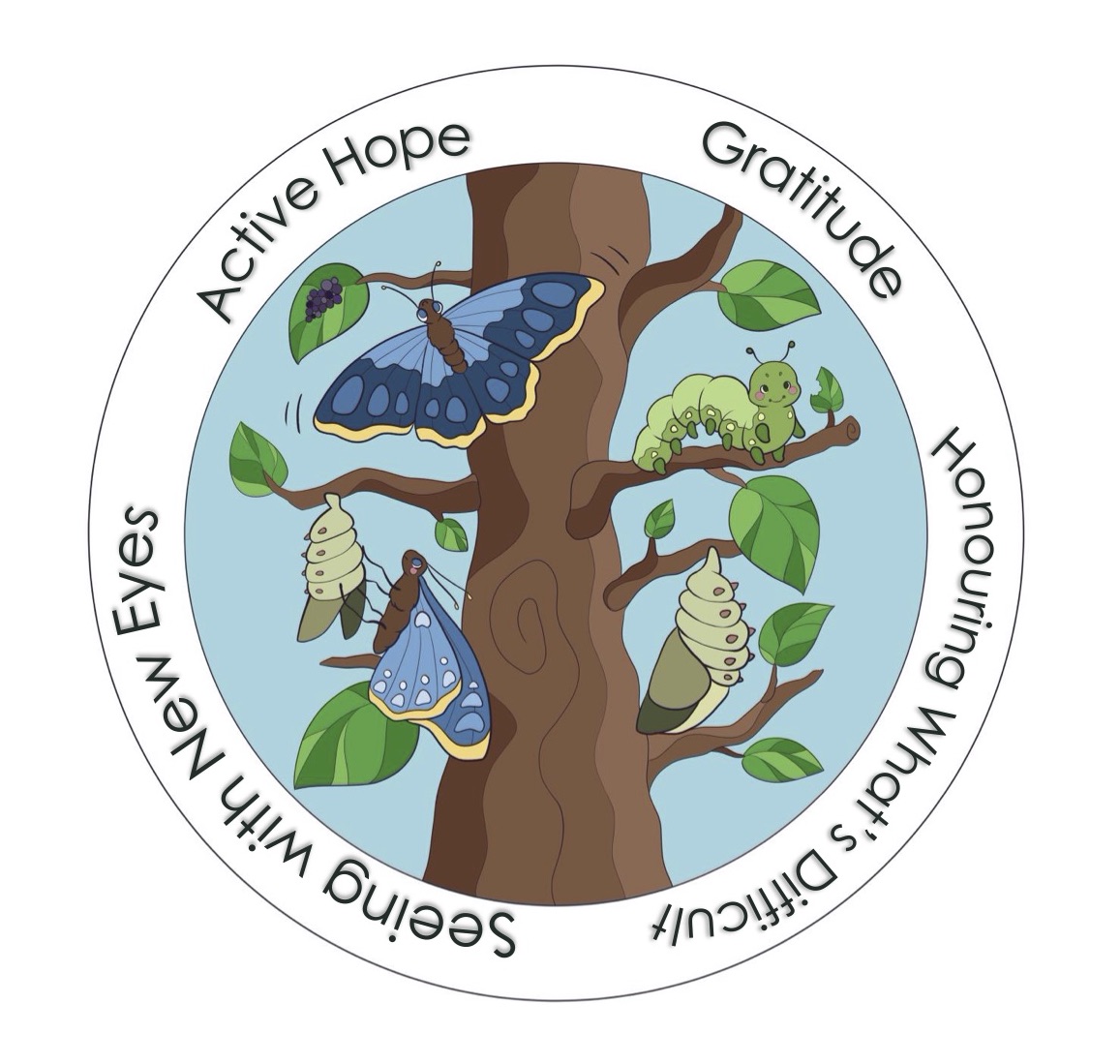
The Butterfly Cycle is a template that can help students be mindful of their own inner experience as they navigate the ups and downs that come their way. Borrowing from Joanna Macy’s four-fold spiral from The Work That Reconnects, the Butterfly Cycle invites students to map their own experience to the life stages of (1) caterpillar, (2) chrysalis, (3) emerging, and then (4) flying adult butterfly.
The Work That Reconnects uses the framework of a four-fold spiral, to engage communities in experiences that support a deep understanding of the ways we are related to life. Experiencing these four stages, namely: (1) gratitude; (2) honouring our pain for the world; (3) seeing with new eyes; and (4) going forth with active hope, empowers us to recognize our inter-relatedness with all life and to use our unique gifts to work together for a better world (Macy & Brown, 2014).
The Caterpillar - Gratitude

Beginning with gratitude helps us to connect to the ways we are supported by life in every moment. Just like the young, hungry caterpillar who gratefully gobbles up all she needs to grow and thrive, we, too, can look around us and recognize the wonders of the world that sustain us. From the delicious way that air fills our lungs and clean water hydrates us, to the support we gain from one another, gratitude opens our hearts to joy and to the abundance that is always available.
The Chrysalis - Honouring what is Difficult

Having spent some time opening to gratitude, we’re better prepared to face the inevitable difficulties that come with life and learning. Just as the caterpillar sheds her skin, and dissolves inside the chrysalis, we often face challenges that shake our confidence. What would shift for us if we were able to honour difficult emotions and experiences, and recognize that within them is the very seedbed for growth and transformation?
Honouring Feelings
Many of us have been conditioned to turn away from or ignore uncomfortable emotions. We’re told to “cheer up” and “stay positive”. What can shift for us, and for our students, when we honour that we’re not always feeling “fine”? What if students understood that sadness and grief are normal, even healthy emotions, and that they are freer to come and go on their own when we allow ourselves to feel them?
Some teachers may shy away from facing students’ feelings; they don’t want to get in over their head. Honouring students’ feelings, though, can be as simple as listening without trying to fix or change anything. Simply letting them know that they are heard and that their feelings are honoured is often all that is needed.
Recognizing the Value of Failure
Whether it is working to decipher a word on a page or struggling with long division, there are moments that try and test our students; moments when they are tempted to give up and walk away. Yet, it is often inside the struggle where the greatest learning happens. It is from that place of feeling beaten down, that the learning becomes possible, that the great transformation begins. Like the caterpillar becoming butterfly, a dissolution occurs; a dissolution that is the very ground for new growth.
We may be tempted to turn away from the difficulty, or at the very least, to wish it weren’t part of the process. So much can shift for us, though, when we find the courage to turn toward difficult experiences and emotions. We develop a growth mindset (Dweck, 2006) when we see failure as a springboard for further learning. Giving our students the freedom to fail, and helping them to recognize the value of mistakes, also makes it possible for them to be more fully creative and innovative. Our world needs their unique gifts: gifts that may only find their way into the world if they can learn to trust this process.
Carol Dweck’s (2006) work on mindsets demonstrates that children who recognize that challenges and mistakes are an opportunity for growth, are better able to work through them and find success; she dubbed this a growth mindset. In contrast, those who possess a fixed mindset are those who see failure as a dead end and a sign of their lack of intelligence.
The Emerging Butterfly - Seeing with New Eyes
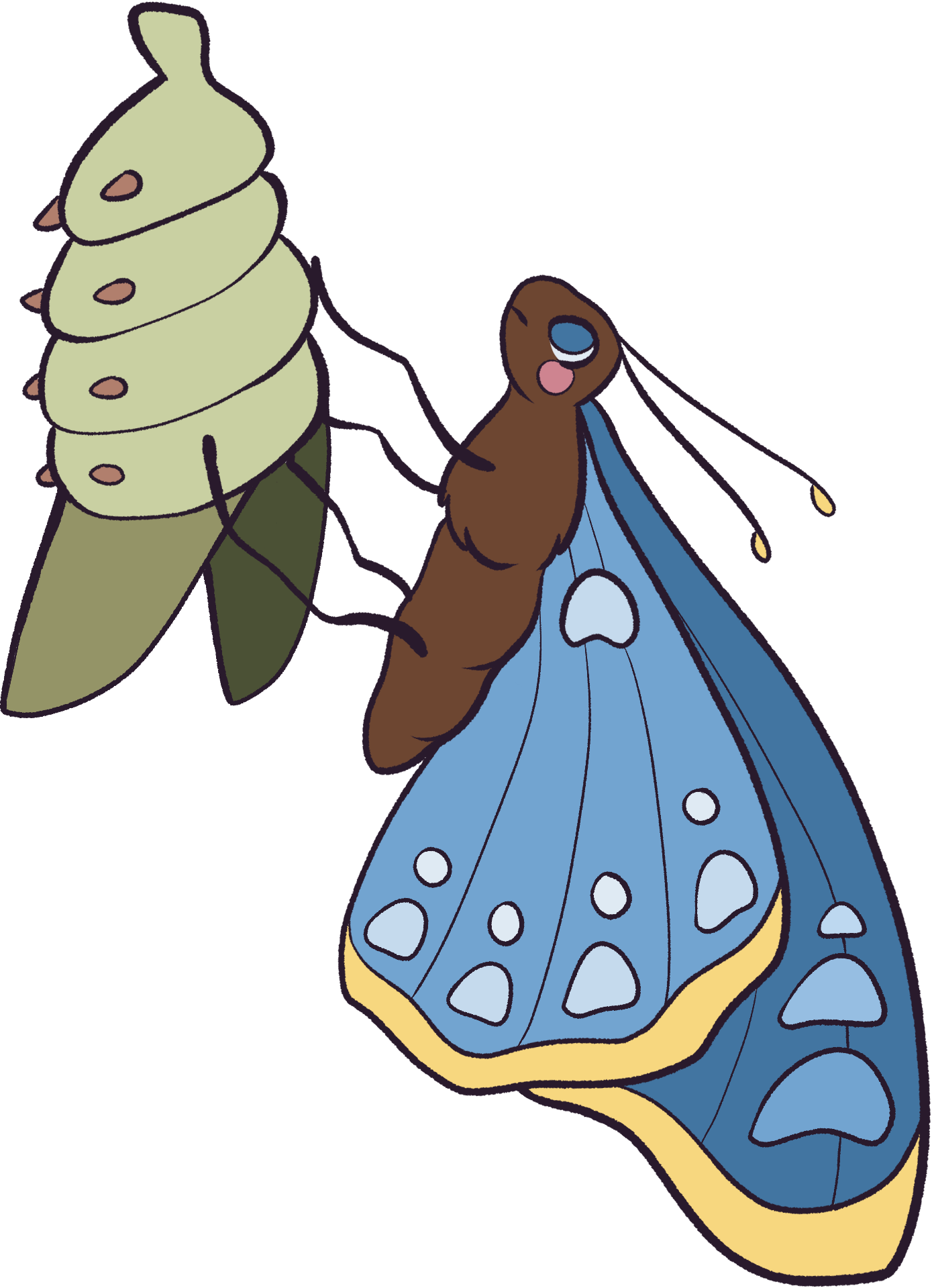
After experiencing the darkness of the chrysalis, the butterfly emerges transformed. The limited vision she had as a caterpillar is replaced by new eyes that see the world in vivid technicolour.
Like the emerging butterfly, we too can see the world differently after having weathered our own challenges. When it comes to challenges in learning, this is the moment of "I get it!". New understanding leads to renewed confidence in reaching learning goals.
Having been through and honoured difficult experiences, we can emerge with a renewed sense of our connection to each other and to all of life. This can also leave us more able to empathize with others.
The Flying Butterfly - Going Forth with Active Hope
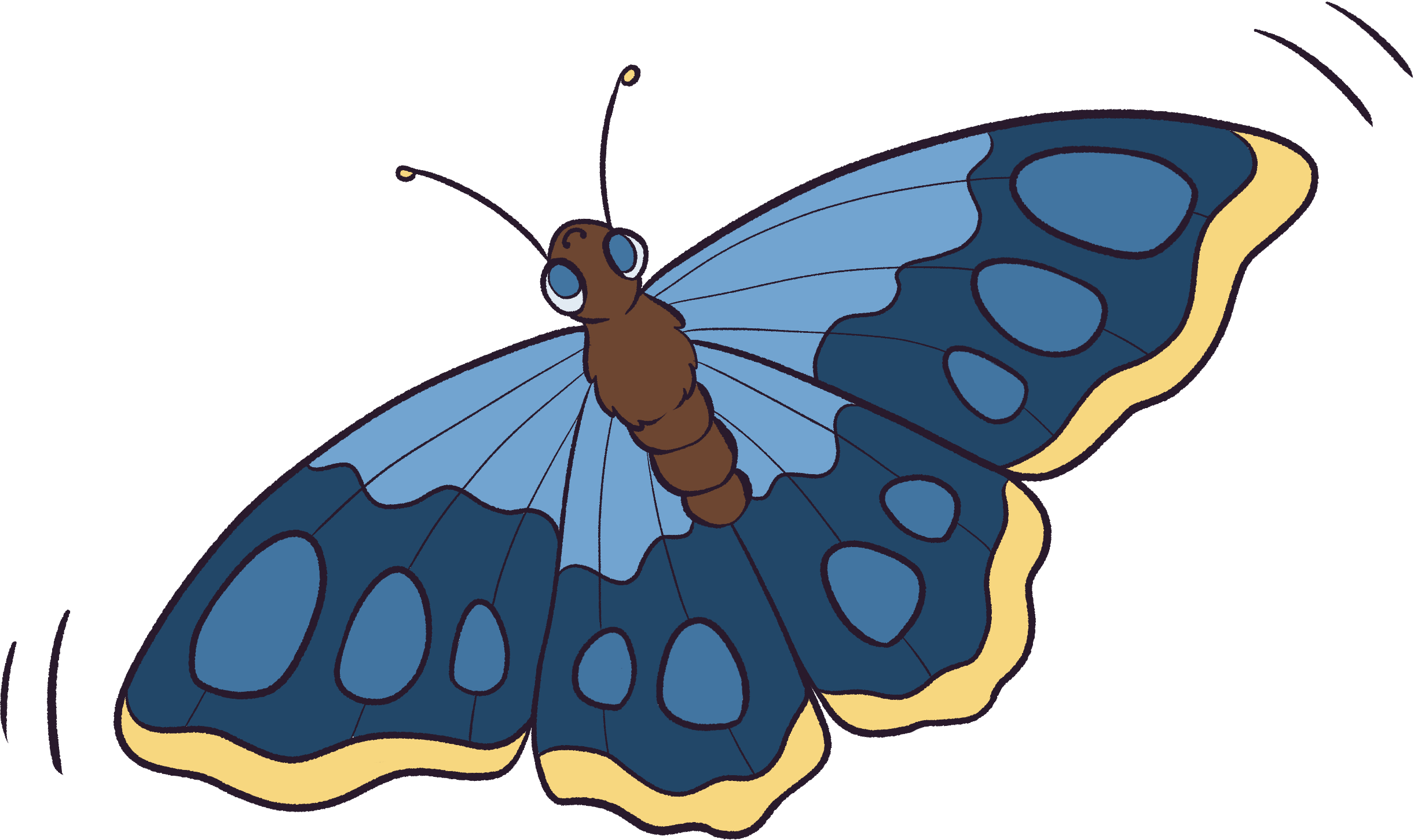
Having started from a place of gratitude, honouring our difficulties, and emerging transformed, we are then prepared to go out into our communities with active hope. As the flying butterfly goes into the world, laying her eggs in hope for the next generation, we can discover and use our own unique gifts to plant hopeful seeds in the world. We are better resourced to take action for social justice and for the planet. As we envision a future where all can thrive, we can set our sights on working together to make that future a reality.
The Cycle Continues
Just as new baby caterpillars emerge, starting the life cycle again, we return again to gratitude. The arc of our experience through this cycle takes place on different scales: we might experience the cycle multiple times in one day, or this pattern might reveal itself over a longer project, or even a lifetime. At any scale, being present to gratitude, honouring our difficulties as fertile grounds for growth, and emerging transformed and full of active hope, can empower us to respond to our experience with wisdom, compassion, and even joy.
Invite us to your schoolyard to experience our in-person nature program We Can Too! This program introduces students to The Butterfly Cycle using puppets, stories, and lots of physical activity.
You can also introduce your students to The Butterfly Cycle in the Grab-and-Go program entitled: My Butterfly Teacher. In this full-day, teacher-led lesson plan, you will find a Desktop Butterfly Cycle colouring sheet. Students can use this to keep their own inner experience front of mind as they navigate the ups and downs in life and learning.
Sequence
Although introduced and described most explicitly in My Butterfly Teacher, the framework of the Butterfly Cycle is present in each of the Thimbleberry Big Day Out resources. It is important to keep the sequence of the activities within each resource – moving from (1) gratitude, to (2) honouring difficulties, and then to (3) seeing with new eyes and (4) active hope. We always want to leave students with a sense of hope and gratitude, rather than leaving them hanging in the chrysalis stage, stuck inside their own difficulties. Connecting back to gratitude at the end of a session will leave them better prepared to meet their own challenges in life and learning.
